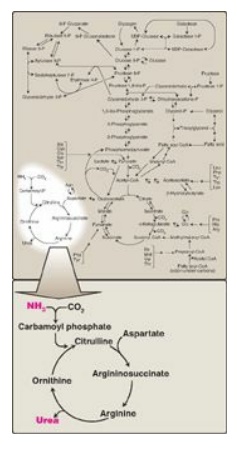Overview of Amino Acids
| Home | | Biochemistry |Chapter: Biochemistry : Amino Acids: Disposal of Nitrogen
Unlike fats and carbohydrates, amino acids are not stored by the body. That is, no protein exists whose sole function is to maintain a supply of amino acids for future use.
Amino Acids: Disposal of Nitrogen
OVERVIEW
Unlike fats and
carbohydrates, amino acids are not stored by the body. That is, no protein
exists whose sole function is to maintain a supply of amino acids for future
use. Therefore, amino acids must be obtained from the diet, synthesized de
novo, or produced from normal protein degradation. Any amino acids in excess of
the biosynthetic needs of the cell are rapidly degraded. The first phase of
catabolism involves the removal of the α-amino groups (usually by
transamination and subsequent oxidative deamination), forming ammonia and the
corresponding α-keto acids, the “carbon skeletons” of amino acids. A portion of
the free ammonia is excreted in the urine, but most is used in the synthesis of
urea (Figure 19.1), which is quantitatively the most important route for
disposing of nitrogen from the body. In the second phase of amino acid
catabolism, described in Chapter 20, the carbon skeletons of the α-keto acids
are converted to common intermediates of energy-producing metabolic pathways.
These compounds can be metabolized to CO2 and water, glucose, fatty
acids, or ketone bodies by the central pathways of metabolism described in
Chapters 8–13 and 16.

Figure 19.1 Urea cycle shown
as part of the essential pathways of energy metabolism. (See Figure 8.2, , for
a more detailed view of intermediary metabolism.)
Related Topics
